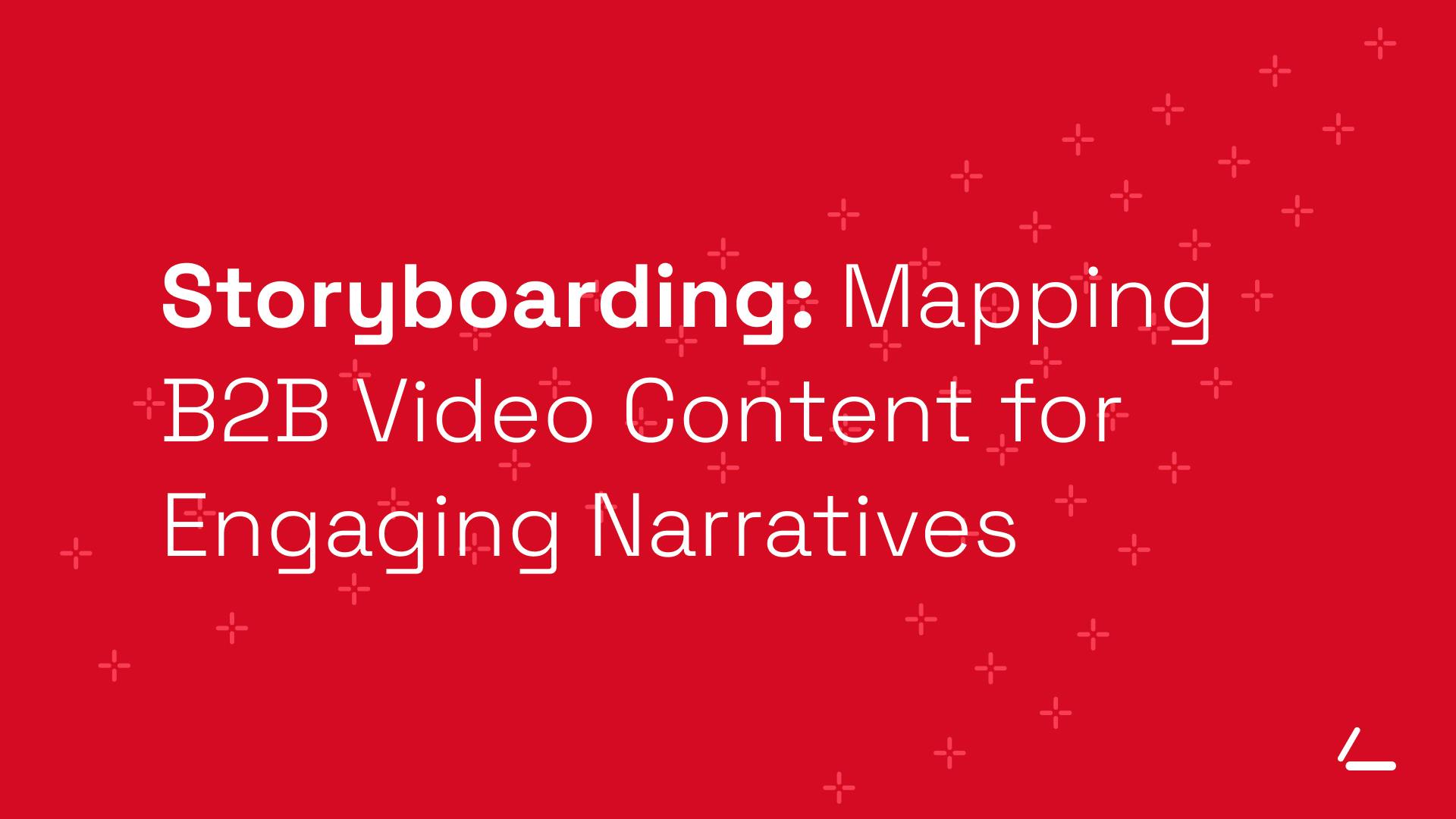Storyboarding: Mapping B2B Video Content for Engaging Narratives

Creating an engaging narrative with video content requires careful preparation — and storyboarding is a key part of that. Storyboarding is the practice of mapping out the video content’s structure, the scene elements needed, and the audio/video components necessary to bring it all to life. It’s a crucial step in creating powerful and entertaining stories. But what exactly is storyboarding?
Introducing Storyboarding — What is it and How Does It Work?
Storyboarding is a technique used in visual storytelling to help organize and visualize ideas. It involves drawing out a series of frames or panels that represent the story's flow, connecting these visuals with written descriptions and dialogue to create an engaging visual narrative. This technique can be used in many fields such as animation, film, comics, advertising, video games, and education.
At its core, storyboarding creates clarity by laying out all the elements of a scene in one place. This makes it easier for creators to plan the order of events and communicate their vision to other stakeholders or collaborators.
Once a storyboard has been completed, it can then be used as a reference point during production and beyond to ensure that all elements are consistent throughout the project. Storyboarding is an invaluable tool for understanding how images work together — and when done right, can have a major impact on the final outcome.
Developing the Narrative Outline for Your Content
1. Develop the Concept: The first step in creating a storyboard is to develop the concept. This involves determining the main idea or goal of your story and generating ideas to support it.
2. Research Your Audience: After deciding on your story's concept, you should research your target audience to better understand who they are and what type of content resonates with them.
3. Brainstorm Ideas: After researching your target audience, brainstorm ideas for how you can convey the desired message through visuals, dialogues, music, and other elements of storytelling. Write down any creative concepts that come to mind during this phase of storyboarding.
4. Create Thumbnails: Now it’s time to create thumbnails of the scenes that will make up your storyboard. Thumbnails are small, rough sketches of each scene that capture its purpose and setting.
5. Write Scripts: Once you’ve created thumbnails for all the scenes in your storyboard, it's time to start writing scripts for each one. Scripts provide more detailed descriptions and dialogue for each of your visuals than a thumbnail would.
6. Create Storyboards: With scripts in hand, it’s time to start constructing individual frames for each scene in your storyboard. To do this, draw out the elements from your script into a sequence of frames that show how each scene will play out visually. Be sure to add descriptions and notes to each frame, as this will provide a clearer indication of what each scene should look like in the final storyboard.
7. Finalize Your Storyboard: Once you’ve created all the frames for your storyboard, it's time to review them and make any necessary changes or tweaks before you submit it for approval. Ensure that all elements are consistent with your original concept and target audience. Make sure the visuals are clear and captivating, and that the dialogue is engaging and appropriate for the intended viewers. Finally, double-check the sequence of scenes to ensure they flow logically into one another.
By following these seven steps, you can create an effective storyboard that captures the desired message of your narrative while resonating with your target audience.